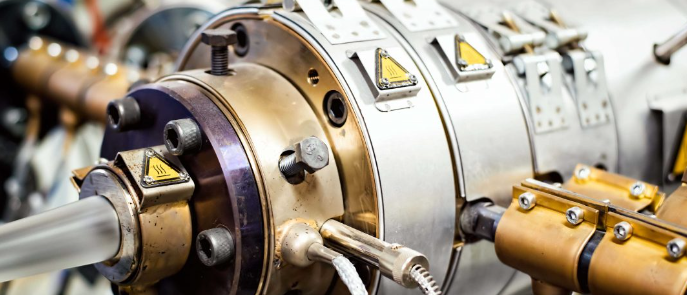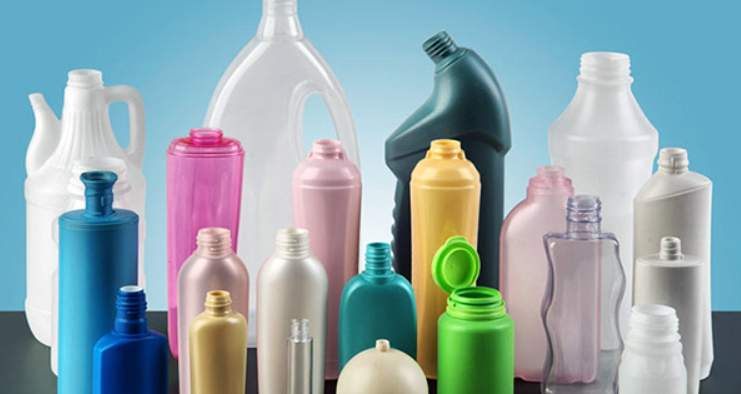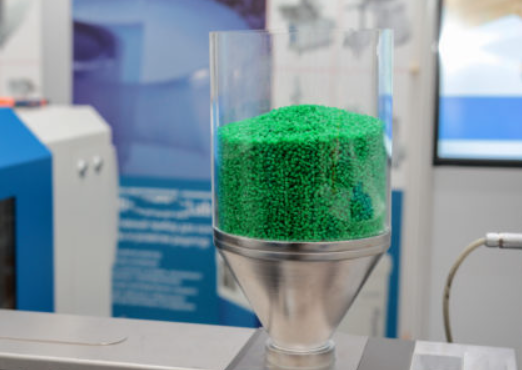Lubricant in extrusion reduces friction, heat, and wear, ensuring smooth flow and shaping of materials with enhanced quality.

Types of Lubricants Used in Extrusion
Extrusion processes rely on various lubricants to ensure smooth operation and quality product output. The selection of a lubricant is a critical decision that impacts the efficiency, cost, and quality of the extrusion process.
Oil-Based Lubricants: Properties and Uses
Oil-based lubricants are prevalent in extrusion due to their excellent lubricity and ability to withstand high pressures.
- High Thermal Stability: They maintain performance at temperatures that may degrade other lubricants.
- Corrosion Protection: Offer protection against rust on machine parts.
- Custom Formulations: Can be formulated with additives to enhance properties such as anti-wear and anti-foaming.
Key applications include:
- Aluminum Extrusion: Used for their ability to provide a thin, protective film at high temperatures.
- Plastic and Rubber Extrusion: Facilitate the smooth passage of materials through dies.
Water-Based Lubricants: Advantages and Limitations
Water-based lubricants are favored for their safety and environmental benefits.
- Cooling Properties: Excellent in dissipating heat from the extrusion process.
- Low Toxicity: Safer for workers and reduces environmental impact.
- Cost-Effective: Generally lower in price compared to oil-based lubricants.
However, they have limitations:
- Evaporation: Can evaporate under high-temperature conditions, requiring frequent application.
- Corrosion: Potential to cause rust if not properly managed.
Typical uses include:
- Wire and Cable Extrusion: Help in reducing the operating temperatures during extrusion.
- Food Packaging: Due to their non-toxic nature, they are suitable for applications where food contact is possible.
Solid Lubricants: Unique Applications in Extrusion
Solid lubricants are used where liquids are impractical or could contaminate the product.
- Graphite and Molybdenum Disulfide: Provide lubrication at extreme pressures and high temperatures.
- PTFE (Polytetrafluoroethylene): Offers minimal friction coefficient and is chemically inert.
Specialized scenarios include:
- High-Temperature Extrusion: Solid lubricants are essential when dealing with materials like titanium, which are processed at very high temperatures.
- Medical Device Manufacturing: Where contamination from liquid lubricants must be avoided.
Benefits of Lubrication in Extrusion Operations
Proper lubrication in extrusion operations is crucial for enhancing performance, quality, and the longevity of the equipment. The benefits are multi-faceted, impacting various aspects of the
extrusion process.
Reducing Friction and Wear
Lubricants play a pivotal role in minimizing the contact between the die and the material, thereby reducing friction. This reduction leads to several advantages:
- Decreased Energy Consumption: Less friction means lower power requirements, making the process more energy-efficient.
- Minimized Equipment Stress: Reducing wear extends the lifespan of components such as screws and barrels.
Key metrics include:
- Coefficient of Friction: High-quality lubricants can reduce this value by up to 50%, depending on the material.
- Wear Rate: Studies show that proper lubrication can reduce wear by more than 25% in high-stress applications.
Enhancing Product Surface Finish
The right lubricant can significantly improve the quality of the extruded product.
- Smooth Surfaces: Lubricants help in achieving a glossy and defect-free surface, crucial in consumer products.
- Consistent Quality: Stable lubrication ensures uniform quality across batches.
Quantifiable outcomes often seen are:
- Surface Roughness Measurements: Improvements of up to 30% have been observed in surface smoothness with effective lubrication.
- Defect Rates: Proper lubrication can lead to a reduction in surface defects by up to 15-20%.
Extending Machinery Life and Reducing Downtime
The longevity of extrusion machinery is heavily influenced by the lubrication system employed.
- Preventative Maintenance: Regular lubrication reduces the frequency of machinery breakdowns.
- Operational Efficiency: A well-lubricated machine operates closer to its optimal speed, enhancing throughput.
For instance:
- Maintenance Costs: Effective lubrication can cut maintenance costs by up to 25% annually.
- Machine Downtime: Proper lubrication can lead to a reduction in downtime by as much as 20%, significantly saving on lost production time.

Mechanisms of Lubrication in Metal Extrusion
Understanding the mechanisms of lubrication can significantly enhance the metal extrusion process, leading to improvements in product quality and machine operation.
The Role of Viscosity in Metal Flow
Viscosity is a critical property of lubricants that dictates their behavior under different operating conditions.
- Control of Metal Flow: Optimal viscosity ensures a consistent metal flow rate, which is crucial for maintaining the dimensional accuracy of extruded parts.
- Heat Dissipation: The viscosity determines a lubricant’s capacity to absorb and transfer heat away from the extrusion interface.
Manufacturers must consider:
- Viscosity Index: Higher values indicate better viscosity stability across temperature changes, often a key specification for lubricants in metal extrusion.
Boundary and Hydrodynamic Lubrication Principles
These principles are foundational for understanding how lubricants function under varying conditions.
- Boundary Lubrication: Occurs when the lubricant film is thin and the surface asperities of the material and die may interact, a common scenario in metal extrusion startups or slow speeds.
- Hydrodynamic Lubrication: When full-film lubrication is achieved, and the metal and die surfaces are fully separated by the lubricant, typically at higher operational speeds.
Performance gains include:
- Friction Coefficients: Can be reduced by up to 90% under hydrodynamic lubrication compared to boundary conditions.
- Load Carrying Capacity: Hydrodynamic lubrication can support higher loads, preventing die wear and extending tool life.
Additives and Their Functions in Extrusion Lubricants
- Anti-wear Additives: React with metal surfaces to form protective layers, reducing wear.
- Extreme Pressure Additives: Activate at high temperatures and pressures to prevent metal-to-metal contact.
Additives improve:
- Wear Resistance: Can increase wear resistance by 50% or more, depending on the additive concentration.
- Load-bearing Capacity: Some lubricants can withstand loads of up to 5 times greater with the right additives.
Selecting the Right Lubricant for Different Extrusion Processes
The selection of the right lubricant for extrusion processes is a critical decision that impacts product quality, machine health, and overall operational costs.
Compatibility with Materials
Lubricants must be compatible with the materials used in both the product and the extrusion machinery.
- Material Safety: Ensure the lubricant does not chemically react with the material being extruded.
- Corrosion Prevention: Choose lubricants that protect against corrosion for longer machine life.
Considerations include:
- Compatibility Tests: Perform tests to ensure that the lubricant does not degrade or react with the material over time.
- Thermal Stability: Select lubricants with a thermal stability range that matches the extrusion processing temperatures.
Application Methods and Equipment
The method of applying lubricant can be as important as the lubricant itself.
- Automated Lubrication Systems: Provide consistent application but require investment in equipment.
- Manual Application: Offers control but may result in inconsistency and higher labor costs.
Key aspects to consider:
- Application Uniformity: A metric indicating how evenly the lubricant spreads over the contact surfaces.
- Equipment Cost: Automated systems may increase initial costs but can reduce overall expenditure by improving efficiency and reducing waste.
Economic and Performance Considerations
The cost-effectiveness and performance impact of a lubricant are essential factors in its selection.
- Total Cost of Ownership: Consider not just the price but also the impact on maintenance costs and downtime.
- Performance Enhancement: Evaluate how much the lubricant can improve the extrusion process speed and product quality.
Metrics to evaluate:
- Lubricant Lifespan: Assess how often the lubricant needs replacement, impacting ongoing costs.
- Return on Investment (ROI): Calculate the ROI based on improved efficiency, reduced downtime, and extended equipment life.

Environmental and Safety Considerations in the Use of Extrusion Lubricants
The use of lubricants in extrusion processes necessitates a focus on environmental impact and safety, ensuring compliance and sustainability.
Regulatory Compliance and Standards
Manufacturers must adhere to regulations that govern the use of lubricants to protect the environment and ensure workplace safety.
- Emission Standards: Select lubricants that minimize harmful emissions to comply with air quality standards.
- Waste Disposal: Use lubricants that align with local disposal regulations to mitigate environmental contamination.
Considerations include:
- Material Safety Data Sheets (MSDS): Review MSDS for all lubricants to ensure compliance with occupational safety and environmental regulations.
- Industry Certifications: Look for lubricants that have received certifications from recognized industry bodies, indicating compliance with current standards.
Eco-friendly and Biodegradable Lubricants
The trend towards sustainable manufacturing includes the use of environmentally friendly lubricants.
- Biodegradability: Choose lubricants that break down naturally without harming the ecosystem.
- Renewable Resources: Opt for lubricants derived from renewable sources to reduce carbon footprint.
Key advantages are:
- Reduction in Environmental Liability: Biodegradable lubricants can decrease the potential for long-term environmental impact.
- Consumer Appeal: Products made using eco-friendly processes often have greater appeal in the marketplace.
Health and Safety in Lubricant Handling
Protecting the health and safety of personnel is paramount when dealing with industrial lubricants.
- Toxicity Levels: Utilize lubricants with lower levels of harmful chemicals to reduce health risks.
- Fire and Explosion Safety: Implement lubricants with higher flash points to minimize fire hazards in the workplace.
Safety measures to implement:
- Personal Protective Equipment (PPE): Ensure that all personnel handling lubricants use appropriate PPE.
- Training Programs: Conduct regular training sessions on the safe handling, storage, and disposal of lubricants.

Environmental and Safety Considerations in the Use of Extrusion Lubricants
Selecting and managing lubricants in the extrusion process demands a deep understanding of their environmental and safety impacts, ensuring operations are both responsible and compliant.
Regulatory Compliance and Standards
Manufacturers must align with stringent regulatory standards to mitigate environmental impact and ensure the safety of their operations.
- Adherence to Legislation: Actively stay updated with changes in legislation such as REACH and OSHA to ensure all lubricants meet or exceed legal requirements.
- Achieving Certifications: Aim for lubricants that have ISO 14001 or Ecolabel certifications, which confirm a lower environmental impact.
It is crucial to:
- Conduct Regular Audits: Regularly audit lubricant use to ensure ongoing compliance with environmental and health and safety standards.
- Maintain Documentation: Keep detailed records of all lubricants used, safety data sheets, and compliance certificates to demonstrate due diligence.
Eco-friendly and Biodegradable Lubricants
Incorporating sustainable practices includes selecting lubricants that minimize environmental damage.
- Use of Plant-based Lubricants: Transition to lubricants made from plant-based materials, which are often renewable and less toxic.
- Reduction of Hazardous Substances: Select lubricants formulated without heavy metals or chlorinated paraffins to lessen environmental hazards.
Targets to achieve:
- Biodegradability Rate: Opt for lubricants with a biodegradability rate of over 60% within 28 days, the standard for environmentally acceptable lubricants.
- Life Cycle Assessments: Conduct assessments to understand the full environmental impact of lubricants, from production to disposal.
Health and Safety in Lubricant Handling
The well-being of employees handling lubricants is a priority that calls for strict safety measures.
- Risk Assessment: Perform comprehensive risk assessments for each lubricant to understand and mitigate potential health risks.
- Safe Storage Practices: Implement correct storage solutions to prevent leaks, spills, and contamination that could pose health risks.
Measures include:
- Exposure Limits: Adhere to recommended exposure limits for any hazardous ingredients within the lubricants used.
- Emergency Response Plans: Establish clear procedures for handling spills or accidents involving lubricants to minimize health risks and environmental damage.

Case Studies: Effective Lubrication Solutions in Industrial Extrusion
Examining real-world examples, we can see the pivotal role of lubrication in enhancing the efficiency and output quality of industrial extrusion processes.
Automotive Industry Applications
The automotive sector frequently employs extrusion for producing various components, where lubrication plays a significant role.
- Innovations in Lubrication: A leading automotive parts manufacturer implemented a synthetic oil-based lubricant, resulting in a 40% reduction in friction compared to traditional products.
- Outcome Metrics: The switch to the synthetic lubricant increased the lifespan of extrusion dies by 30%, leading to a notable decrease in production costs and an increase in operation efficiency.
A key focus is:
- Continuous Improvement: Automotive companies often engage in ongoing optimization of lubricant usage to further enhance process efficiency and equipment longevity.
Aerospace Component Manufacturing
Aerospace extrusion processes demand lubricants that can withstand extreme conditions.
- High-Performance Requirements: Lubricants with high thermal stability and low outgassing properties are essential for aerospace components, ensuring safety and performance at high altitudes and speeds.
- Quantitative Benefits: Use of specialized lubricants in aerospace extrusion has shown to extend the maintenance intervals by up to 50%, significantly reducing downtime and maintenance costs.
Focused strategies include:
- Tailored Solutions: Aerospace manufacturers often work with lubricant suppliers to develop custom formulations that meet the specific needs of their extrusion processes.
Success Stories in Aluminum and Plastic Extrusion
Both aluminum and plastic extrusion industries have seen advancements through the use of specialized lubricants.
- Aluminum Extrusion: By employing water-based lubricants with advanced additives, an aluminum extrusion plant reported a 20% increase in production speed and a 15% improvement in surface finish quality.
- Plastic Extrusion: The transition to high-viscosity, temperature-resistant lubricants allowed a plastic extrusion company to achieve a 25% faster extrusion rate, with a significant reduction in material wastage.
Benchmark achievements include:
- Cost Savings: Aluminum extrusion facilities documented a 10% reduction in overall operational costs after optimizing their lubrication systems.
- Sustainability Gains: Plastic extruders using eco-friendly lubricants reported a 30% reduction in environmental waste due to improved process control and reduced lubricant disposal needs.




